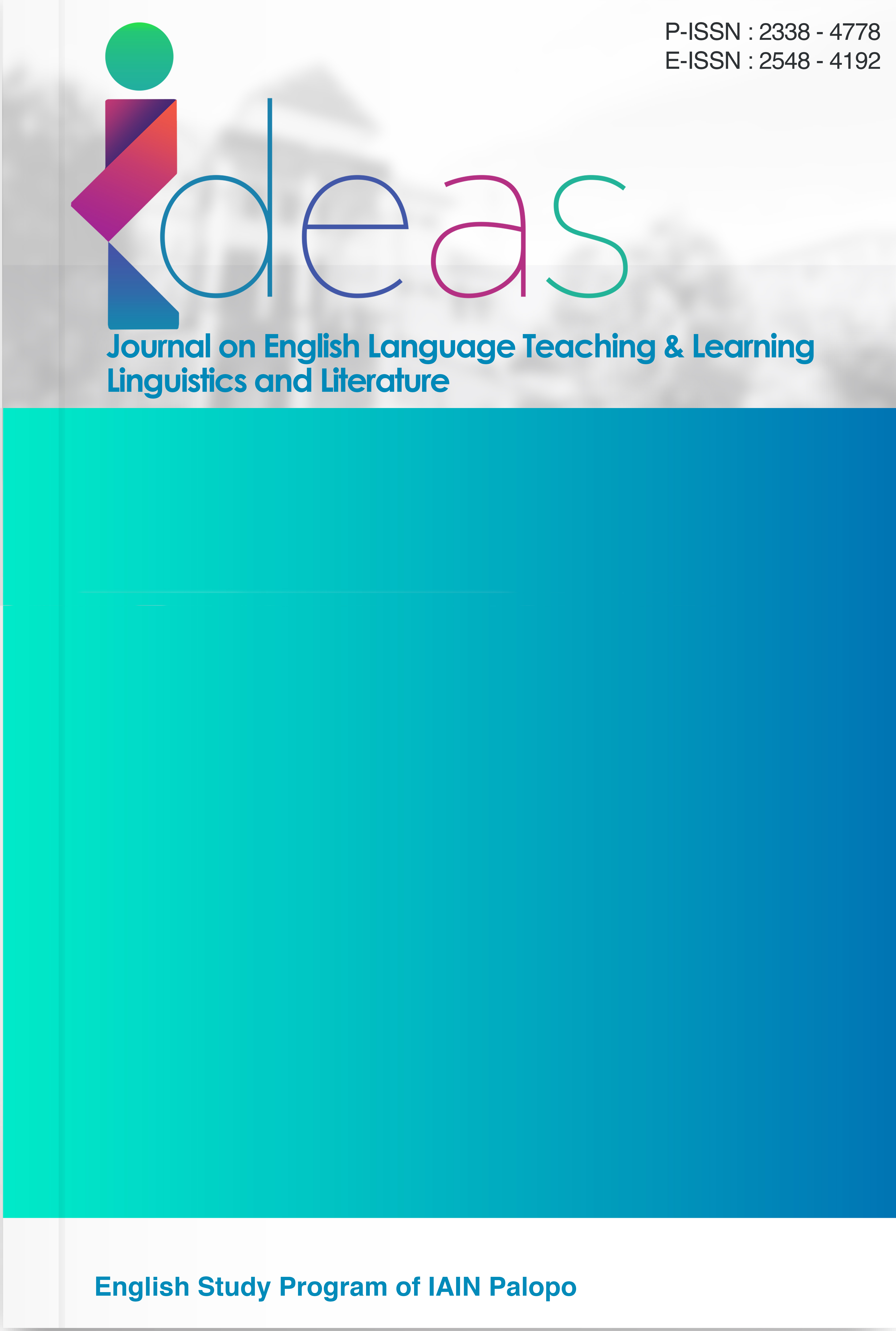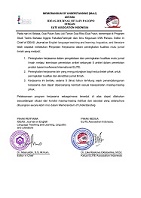An Analysis of Directive Speech Act Found in “Moana 2” Movie
DOI:
https://doi.org/10.24256/ideas.v13i2.7847Keywords:
directive speech acts, movie, moana 2Abstract
This research aims to analyze directive speech acts found in the animated movie Moana 2 using Searle’s (1979) theory of illocutionary acts. Directive speech acts are utterances that are intended to persuade the listener to take action, either directly or indirectly. The data were gathered through observation, by observing the film and reading the official script. According to the categories of directed speech acts, the utterances were categorized and interpreted using a descriptive qualitative technique. The result of data analyis showed that every character in the movie utilized a total of 45 directed speech acts. They were divided into five categories: warnings, suggestions, requests, commands, and advice. Command represented 40% of the data, making it the most dominant category among them. Requests and suggestions were following. This dominance highlights Moana’s strong leadership role, as she regularly employs commanding words to influence people and steer the plot. Additionally, the results showed how the social context, character relationships, and narrative suspense of the film all influence the directed speech actions. In this study, the role of directive acts in animated film was analyzed in detail, which advances the subject of pragmatics. It should offer helpful references for future studies on media language usage and speech act theory.
References
Anak Agung Ayu Dian Andriyani & Ida Ayu Putri Gita Ardiantari. (2023). Tindak Tutur pada Interaksi Penjual dan Pembeli di Warung Tradisional Desa Penglipuran. Diglossia: Jurnal Kajian Ilmiah Kebahasaan Dan Kesusastraan, 15(1), 153–165. https://doi.org/10.26594/diglossia.v15i1.4048
Ariasih, N. M., Dian, K., & Candra, P. (n.d.). RETORIKA: Jurnal Ilmu Bahasa 2025 CC-BY-NC-SA 4.0 License Illocutionary Act Found in Movie “Nimona.” https://doi.org/10.55637/jr.11.1.10399.58-63
Austin, J. L. (1962). How to Do Things with Words.
Cutting, J., & Fordyce, K. (2020). Pragmatics. Routledge. https://doi.org/10.4324/9781003010043
Dewi, P., & Sari, D. (2022). Perception of Digital Storytelling in Overcoming Fear of Speaking English through Interdisciplinary Project of Gender Issues. IDEAS: Journal on English Language Teaching and Learning, Linguistics and Literature, 10(2), 1635–1642. doi:https://doi.org/10.24256/ideas.v10i2.2748
Fitriani, S. S., Achmad, D., & Rasmita, F. (2020). An analysis of illocutionary acts in a fantasy movie. Studies in English Language and Education, 7(1), 170–180. https://doi.org/10.24815/siele.v7i1.13635
Hasler-Barker, M. (2018). Pragmatics. In the Cambridge Handbook of Spanish Linguistics (pp. 437–456). Cambridge University Press. https://doi.org/10.1017/9781316779194.021
Searle, R. J. (1979). Expression and Meaning: Studies in the Theory of Speech Acts. Cambridge: Cambridge University Press.
https://doi.org/10.1017/CBO9780511609213
Sidabutar, K. (2022). Grice's Types of Maxims in the "Willoughbys" Movie. IDEAS: Journal on English Language Teaching and Learning, Linguistics and Literature, 10(1), 326-337. doi:https://doi.org/10.24256/ideas.v10i1.2661
Sianipar, W. L., Pangaribuan, R. E., & Sembiring, R. A. (2025). An Analysis of Illocutionary Acts in The Inside Out 2 Animated Movie. JALL (Journal of Applied Linguistics and Literacy), 9(1), 1. https://doi.org/10.25157/jall.v9i1.17132
Tyas, N. (2022). Students' Perception of Self-Directed Learning (SDL) in Learning English by Using YouTube Videos. IDEAS: Journal on English Language Teaching and Learning, Linguistics and Literature, 10(2), 1307-1314. doi:https://doi.org/10.24256/ideas.v10i2.3208
Violita, V., & Cholsy, H. (2022). Speech Acts Equivalence of Audiovisual Translation on the Enola Holmes Netflix Movie Subtitle. IDEAS: Journal on English Language Teaching and Learning, Linguistics and Literature, 10(1), 209-225. doi:https://doi.org/10.24256/ideas.v10i1.2589
Downloads
Published
Issue
Section
Citation Check
License
Copyright (c) 2025 Gede Eka Suasta Putra, Ida Ayu Putri Gita Ardiantari

This work is licensed under a Creative Commons Attribution-ShareAlike 4.0 International License.
Authors retain copyright and grant the journal right of first publication with the work simultaneously licensed under an Attribution-ShareAlike 4.0 International (CC BY-SA 4.0) that allows others to share the work with an acknowledgement of the work's authorship and initial publication in this journal.
Authors are able to enter into separate, additional contractual arrangements for the non-exclusive distribution of the journal's published version of the work (e.g., post it to an institutional repository or publish it in a book), with an acknowledgement of its initial publication in this journal.
Authors are permitted and encouraged to post their work online (e.g., in institutional repositories or on their website) prior to and during the submission process, as it can lead to productive exchanges, as well as earlier and greater citation of published work (See the Effect of Open Access)




